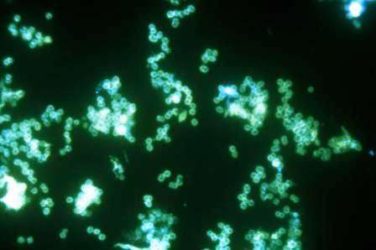FROM PEDIATRICS
A newly published set of clinical guidelines for the diagnosis of fetal alcohol spectrum disorder (FASD), the first such update to the guidelines since 2005, will help health care providers better diagnose children exposed to alcohol during gestation.
“These new guidelines will be a valuable resource for clinicians to accurately diagnose infants and children who were affected by alcohol exposure before birth,” George F. Koob, PhD , director of the National Institute on Alcohol Abuse and Alcoholism, said in a statement . “They represent the most data-driven diagnostic criteria for fetal alcohol syndrome and fetal alcohol spectrum disorder produced to date.”
The guidelines call for a multidisciplinary approach to FASD diagnosis, which would require children suspected of FASD to be evaluated by either a pediatrician or a clinical geneticist/dysmorphologist, along with undergoing a neuropsychological and behavioral assessment. Children also should be assessed by speech pathologists, occupational therapists, physical therapists, audiologists, psychiatrists, and ophthalmologists on a case-by-case basis, if needed ( Pediatrics. 2016;138[2]:e20154256 ).
“[FASD], the umbrella term for the range of disabilities that can result from prenatal alcohol exposure, represents the leading cause of preventable developmental disabilities in the world,” according to an NIH statement. “As a result of alcohol exposure in the womb, children can have lower IQ, restricted growth resulting in shorter height/lower weight, small head size, a characteristic pattern of facial deformities, and behavioral issues such as attention deficit, poor impulse control, and the inability to regulate mood/behavior.”
As a first step outlined in the diagnostic algorithm in the guidelines, the mothers should be assessed to determine how much prenatal alcohol was consumed; there is a table with a definition of documented prenatal alcohol exposure as it applies to the four definitions. The guidelines stress that no amount of alcohol consumption during pregnancy can be considered safe; therefore, the amount and frequency of alcohol consumption, along with any possible drug use, is critical to determining the severity of FASD in the child.
The four diagnostic categories into which FASD has been divided have not been changed in the update, although the criteria for each have been updated. These four categories, which were created by the Institute of Medicine in 1996, are: fetal alcohol syndrome (FAS), which applies to the most severely affected children; partial FAS (PFAS), which applies to children who display some, but not all, of the full spectrum of FAS characteristics; alcohol-related neurodevelopmental disorder (ARND), which applies to children who have no physical signs of FAS but do display cognitive or behavioral impairment; and alcohol-related birth defects (ARBD), which applies to children with no FAS symptoms aside from a physical malformation brought on by prenatal alcohol consumption.
“These four diagnostic categories remain the most apt descriptors of the range of disabilities observed within the continuum of FASD,” guidelines coauthor Kenneth R. Warren, MD , said in a statement. “We have refined the guidelines to reflect our collective expertise gained through the evaluation of more than 10,000 children in domestic and international venues.”
There is an extensive chart in the guidelines article documenting the updated criteria for the four diagnostic criteria.
After determining maternal alcohol consumption during pregnancy, characteristic structural features should be evaluated in the child. Typical physical signs of FASD include short palpebral fissures, a smooth philtrum, and a vermilion border of the upper lip that may be thinner than normal, along with midface hypoplasia. There is a new lip/philtrum guide for the white population, incorporating a 45-degree view in the guidelines.
From there, neurodevelopmental assessments and neuropsychological evaluations should be conducted to identify any cognitive impairments, keeping in mind that these will progress as the child ages. Finally, a multidisciplinary case conference should be held to discuss whether or not FASD should be diagnosed or not.
“These updated guidelines reflect consensus among a large and experienced cadre of FASD investigators in the fields of dysmorphology, epidemiology, neurology, psychology, developmental/ behavioral pediatrics, and educational diagnostics,” wrote the authors of the guidelines, led by H. Eugene Hoyme, MD of the University of South Dakota in Sioux Falls. “The improved specificity of these guidelines will aid clinicians in assignment of more accurate diagnoses of alcohol-exposed infants and children, thereby leading to more widespread early intervention and improved prevention efforts.”
The authors reported no relevant financial disclosures.




